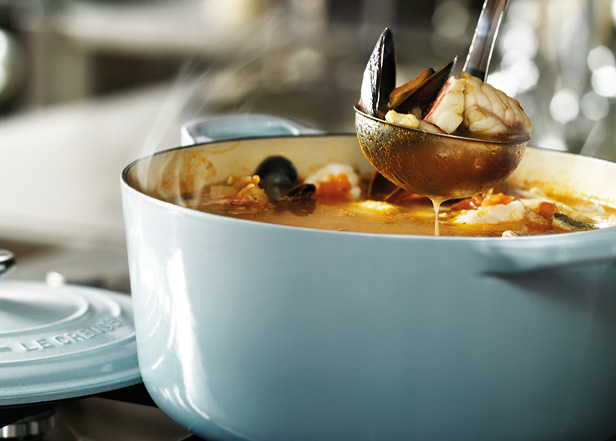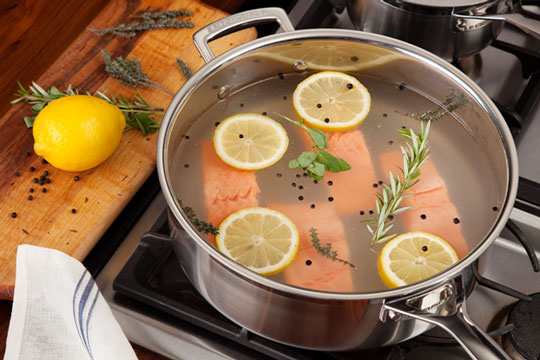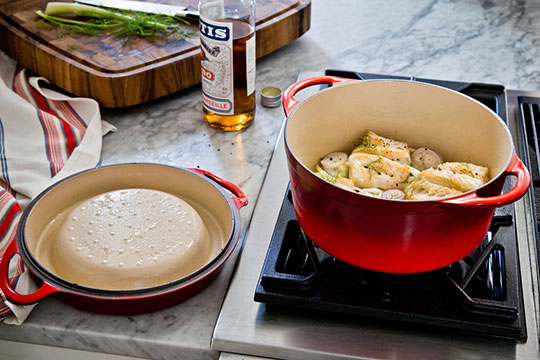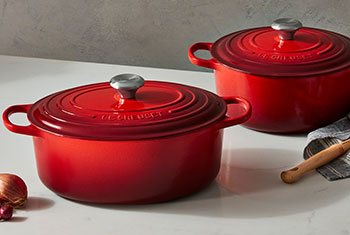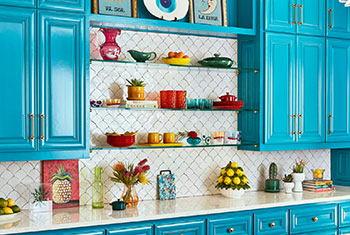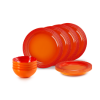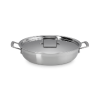There is no better way to cook tender, flaky fish and succulent shellfish than by using the cooking methods of steaming and poaching. These simple, straightforward techniques use moisture to gently cook seafood to perfection, and can be used to prepare almost every type of fish and shellfish.
Both methods produce excellent results, but differ in pan choice, amount of liquid and versatility. When poaching, the food is completely submerged in a liquid, whereas steaming uses a small amount of liquid to create a flavourful fog to cook the food. But there are a few other subtle differences to consider – read on for our tips about both methods that will ensure your success when cooking seafood at home.
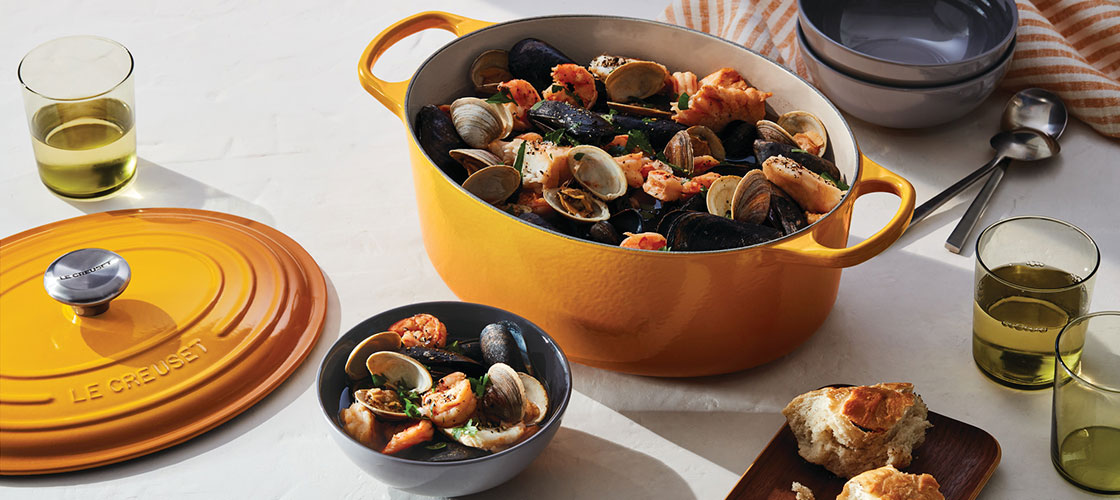
Steaming Seafood
Steam is actually hotter than boiling water, so it cooks food very quickly and evenly for a healthy meal in no time. And since seafood has little fat, steaming keeps your food flavourful and tender. The higher temperature of steam also makes it ideal for cooking bivalves such as clams or mussels, as it forces the shells to burst open.
An enamelled cast iron casserole is an ideal vessel for steaming at home. For fish, shrimp or scallops, simply place a rack or vegetable steamer into the bottom of the pot to keep it elevated. Add a small amount of liquid to the pot and then bring it to a simmer. Cover with the tight-fitting lid and steam until the food is just cooked through – fish fillets are ready when they are firm, opaque, easily flake and reach an internal temperature of 60°C. For shellfish like clams and mussels, wait until most of the shells have opened (and discard any that do not open). And for anything with hard outer shells, like lobster or crab, the tender meat is protected by the shell so it’s best to use a timer to know when they are steamed to perfection.
Steaming is also a great choice when you’d like to cook other foods at the same time as the main protein. Vegetables such as green beans, sliced potatoes, asparagus and winter squash can all be placed alongside the seafood to cook, no matter the method or pot used.
Poaching Seafood
Poaching is a gentle way of cooking food in liquid over a simmering, low heat. And while all seafood can technically be poached, this method is best suited for fish fillets as well as delicate shellfish like shrimp and scallops. The chosen cooking liquid is best simmered in a tall, deep casserole or a wide, shallow pan, and infusing the liquid with herbs, citrus or aromatics adds even more flavour to the final dish. It is a simple process, but you must take care to keep the water from getting too hot or boiling which can break up the fish or lead to tough, overcooked meat. As in steaming, the fillets are ready when they are firm, opaque and reach an internal temperature of 60°C.
Poaching in water or a low-fat liquid like broth is a heart-healthy way of preparing a meal. However, poaching can also be done in oil or butter. When fish is poached this way, it results in a silky, luxurious texture and rich flavour. This works best on seafood with a firmer texture such as salmon or tuna steaks and is a decadent option for dinner parties and special occasions.
Steaming and Poaching Tips
- Choose the right liquid – Whether you’re steaming or poaching, the liquid you choose can either help impart flavour to the final dish or provide a neutral canvas. Choose stock, wine, beer or butter for subtle seasoning while cooking. Or stick to water if you want to preserve the natural briny flavour of the sea.
- Add extra seasoning – Citrus, herbs, dried spices and aromatics provide endless flavouring possibilities. If you are steaming, seasonings can be rubbed directly onto the fish for a more intense taste, but when poaching they go into the liquid for a subtle, diffused flavour.
- Choose the right cooking vessel – Tall, deep casseroles or wide, shallow pans work best for poaching delicate fish fillets. Steaming requires something with a lid that can go into the oven or burble on the stovetop. And a large pot is needed when steaming larger batches of things like crab legs, oyster clusters and lobster, or when making a seafood boil or clam bake.

